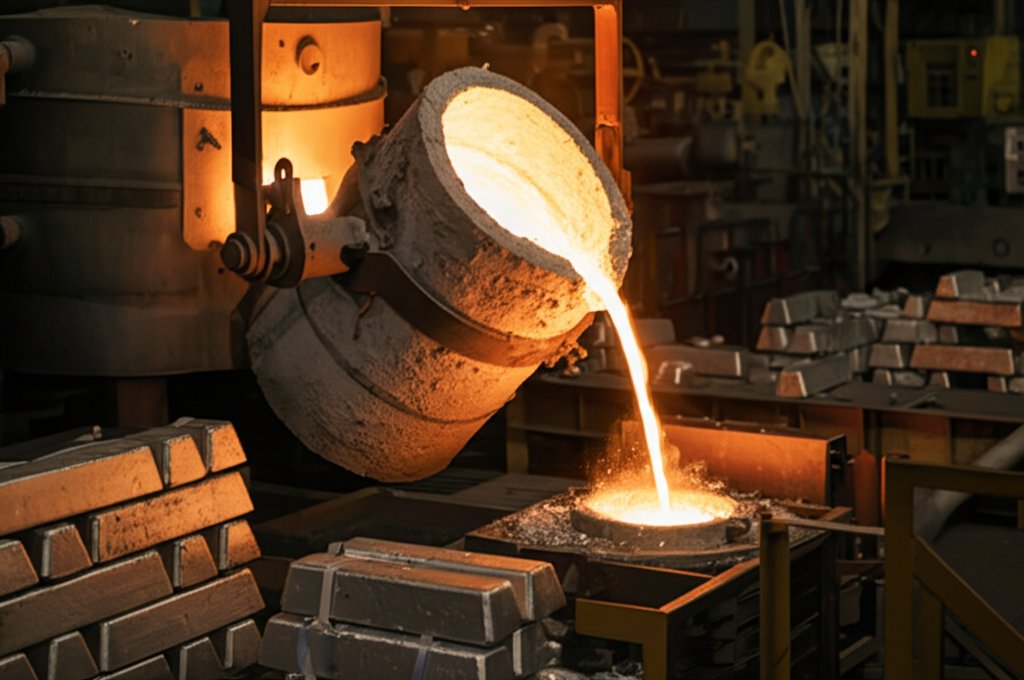
Understanding the melting point of aluminum is essential for anyone involved in industries ranging from construction to aerospace. This crucial thermal property defines how aluminum behaves under high temperatures, impacting everything from material selection to product performance. When you consider the various applications of aluminum, you'll notice that its ability to withstand heat without losing structural integrity is a key factor in its widespread use.
In its pure form, aluminum melts at a precise temperature of 1220.58°F (660.32°C). However, this characteristic is not just a trivial detail—it is a pivotal consideration in design and engineering. Imagine you're designing an aerospace component; knowing the aluminum melting point helps you predict how the material will perform under the intense heat conditions encountered during flight. Similarly, in construction, where aluminum is valued for its lightweight and corrosion-resistant properties, understanding its thermal limits ensures safety and durability.
The significance of aluminum's melting point extends beyond just avoiding structural failure. It also plays a role in manufacturing processes, such as casting and welding, where precise temperature control can influence the quality and strength of the final product. For instance, in the automotive industry, aluminum's thermal properties are leveraged to enhance fuel efficiency and performance by optimizing heat exchange systems.
In summary, the melting point of aluminum is more than a mere number; it is a fundamental property that influences how aluminum is utilized across various sectors. By grasping this concept, innovators and engineers can harness aluminum's full potential, ensuring that it meets the demands of modern applications and continues to drive progress in technology and design.
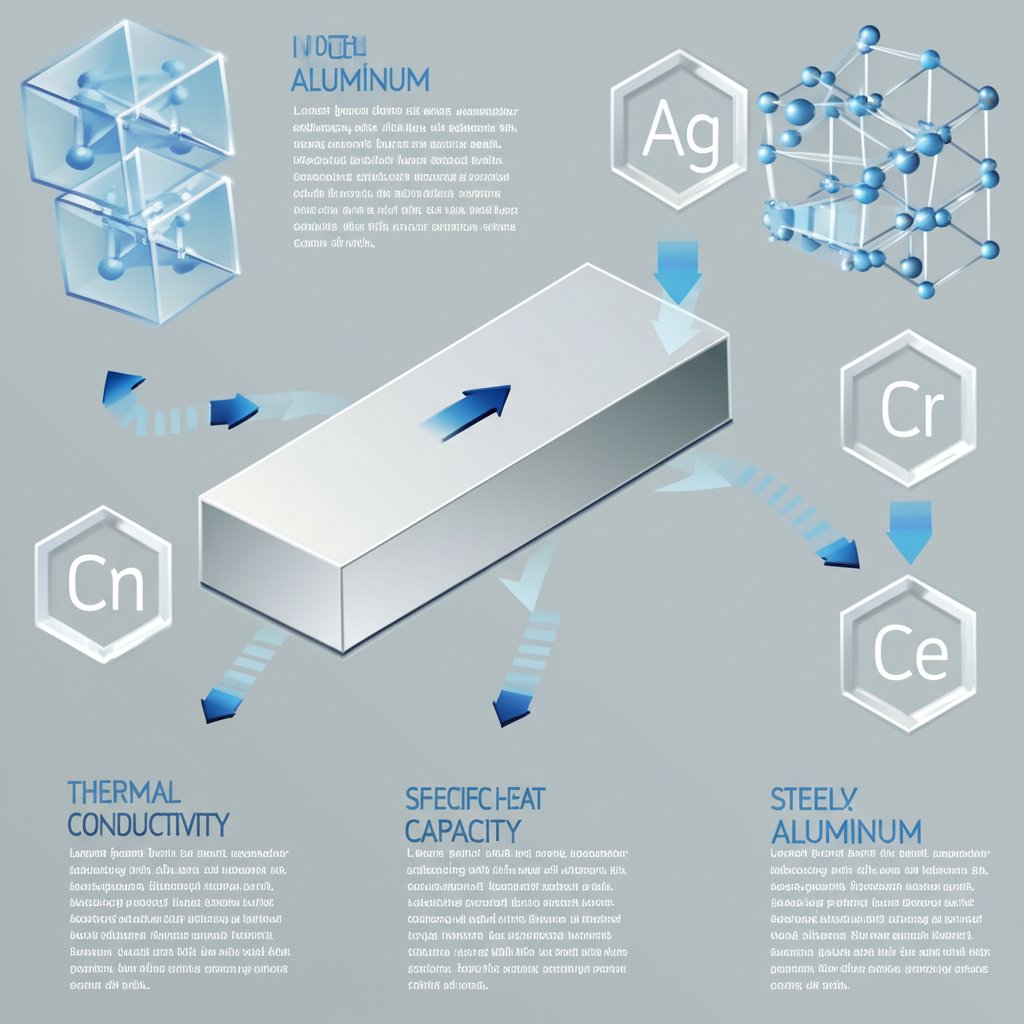
When you think about aluminum, its versatility and adaptability across various industries often come to mind. But what makes it so adaptable? The answer lies in its thermal properties. Aluminum is known for its excellent heat conduction and specific heat capacity, which are pivotal in determining its melting point and overall thermal behavior.
Aluminum's thermal conductivity is particularly noteworthy. It allows for efficient heat transfer, making it a preferred material in applications where rapid heat dissipation is crucial, such as in heat exchangers and cooling systems. According to data from the Engineering ToolBox, aluminum's thermal conductivity is approximately 237 W/m K at room temperature, which surpasses many other metals.
Specific heat capacity is another critical aspect. It measures how much heat energy is required to change the temperature of a substance. Aluminum has a specific heat capacity of about 0.902 kJ/kg K at 300 Kelvin, which means it can absorb a significant amount of heat before its temperature rises significantly. This property is essential in applications where temperature stability is required.
Now, let's dive into how purity affects aluminum's melting point. In its pure form, aluminum melts at approximately 660.32°C (1220.58°F). However, the presence of impurities can cause variations in this melting point. For instance, when impurities are present, the melting point may increase and span a wider range. This phenomenon is known as melting point depression. As noted by Thyssenkrupp Materials, a narrower melting range is indicative of higher purity levels.
Comparatively, aluminum's melting point is lower than that of other metals like copper and iron, which melt at 1085°C and 1538°C, respectively. This lower melting point, combined with its excellent thermal properties, makes aluminum an ideal candidate for applications requiring lightweight yet durable materials.
In summary, understanding the thermal properties of aluminum, including its conductivity and specific heat capacity, alongside its purity level, provides valuable insights into its melting behavior. These properties not only influence its performance in various applications but also guide innovations in material science and engineering.
Understanding the melting point of aluminum requires a grasp of how temperature scales like Celsius and Fahrenheit impact our perception of this critical property. When discussing aluminum's melting point, it's crucial to recognize that the scales are simply two different ways of expressing the same temperature. In Celsius, aluminum melts at 660.32°C, while in Fahrenheit, this translates to 1220.58°F. These conversions can sometimes lead to confusion, especially in international contexts where both scales are used interchangeably.
Why does this matter? Imagine you're working on a global project with team members from countries using different temperature scales. Misunderstandings can arise if there's a lack of clarity about which scale is being referenced, leading to potential errors in engineering calculations or material selection. To avoid such issues, it's beneficial to familiarize yourself with the conversion formulas:
| Temperature Scale | Melting Point of Aluminum |
|---|---|
| Celsius | 660.32°C |
| Fahrenheit | 1220.58°F |
Converting between these scales is straightforward with the formulas: °F = (°C × 9/5) + 32 and °C = (°F - 32) × 5/9. By using these conversions, you can ensure that your data is accurate regardless of the scale in use.
In conclusion, while the melting point of aluminum in Celsius and Fahrenheit might seem like a simple conversion, understanding these differences is vital for precise communication and application across various industries. By maintaining clarity in temperature scale usage, you can prevent costly misunderstandings and enhance the accuracy of your work.
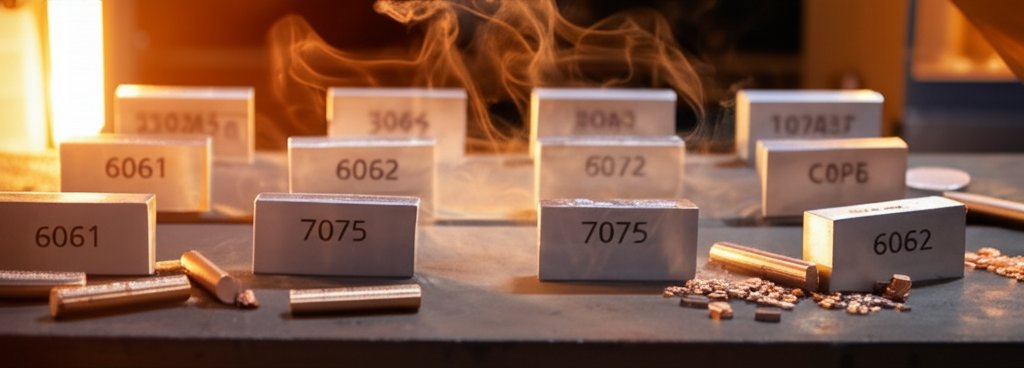
When you delve into the world of aluminum alloys, you'll notice that the melting point of aluminum alloys can vary significantly from that of pure aluminum. This variation is primarily due to the introduction of alloying elements, which modify aluminum's properties to meet specific industrial needs. Understanding how these elements affect the aluminum alloy melting range is crucial for engineers and designers aiming to optimize product performance.
Alloying elements such as copper, magnesium, silicon, and zinc are commonly added to aluminum to enhance its mechanical properties. Each element influences the melting range differently:
These variations in melting points due to alloying elements allow for customized material properties that cater to specific engineering demands, demonstrating the versatility of aluminum alloys.
The implications of these melting point variations are profound in industries like aviation and automotive. For instance, in the aviation sector, where weight and strength are critical, aluminum alloys with optimized melting ranges are used to manufacture lightweight yet robust aircraft components. Similarly, in the automotive industry, the choice of alloy directly impacts vehicle performance and fuel efficiency. The use of 6000 series alloys in car frames not only reduces weight but also enhances safety and durability.
In conclusion, the melting point of aluminum alloys is a vital consideration in product design and performance across various sectors. By understanding how alloying elements influence the aluminum alloy melting range, manufacturers can make informed decisions that drive innovation and efficiency. For those seeking customized solutions, partnering with a reputable aluminum manufacturer like Shengxin Aluminum can provide access to high-quality alloys tailored to specific industry needs.
When exploring high-performance aluminum alloys, two names frequently stand out: 6061 and 7075. These alloys are renowned for their unique properties, which make them indispensable in various industrial applications. But what exactly sets them apart, particularly in terms of their melting points and mechanical characteristics?
The melting point of 6061 aluminum is approximately 582-652°C, making it a versatile choice for applications requiring a balance of strength and corrosion resistance. This alloy is widely used in structural components, electronics, and automotive parts due to its excellent machinability and weldability. For instance, 6061 aluminum is often found in aircraft fittings and marine hardware, where reliability and durability are paramount.
In contrast, the melting point of 7075 aluminum ranges from 477-635°C. Known for its exceptional strength-to-weight ratio, 7075 is frequently employed in aerospace and military applications, where high-stress resistance is critical. Despite its lower formability compared to 6061, 7075's robustness makes it ideal for aircraft structures and high-wear components.
Understanding these differences is crucial for selecting the right alloy for your specific needs. While 6061 offers versatility and ease of use, 7075 provides unmatched strength for demanding environments. This comparative insight not only aids in material selection but also highlights the importance of aligning alloy properties with application requirements.
In conclusion, the choice between 6061 and 7075 aluminum alloys hinges on the specific demands of your project. Whether you prioritize workability or strength, these alloys offer tailored solutions that enhance performance across a wide range of industries. For those seeking expert guidance and high-quality materials, collaborating with a leading manufacturer like Shengxin Aluminum can provide access to state-of-the-art alloys designed to meet your exact specifications.
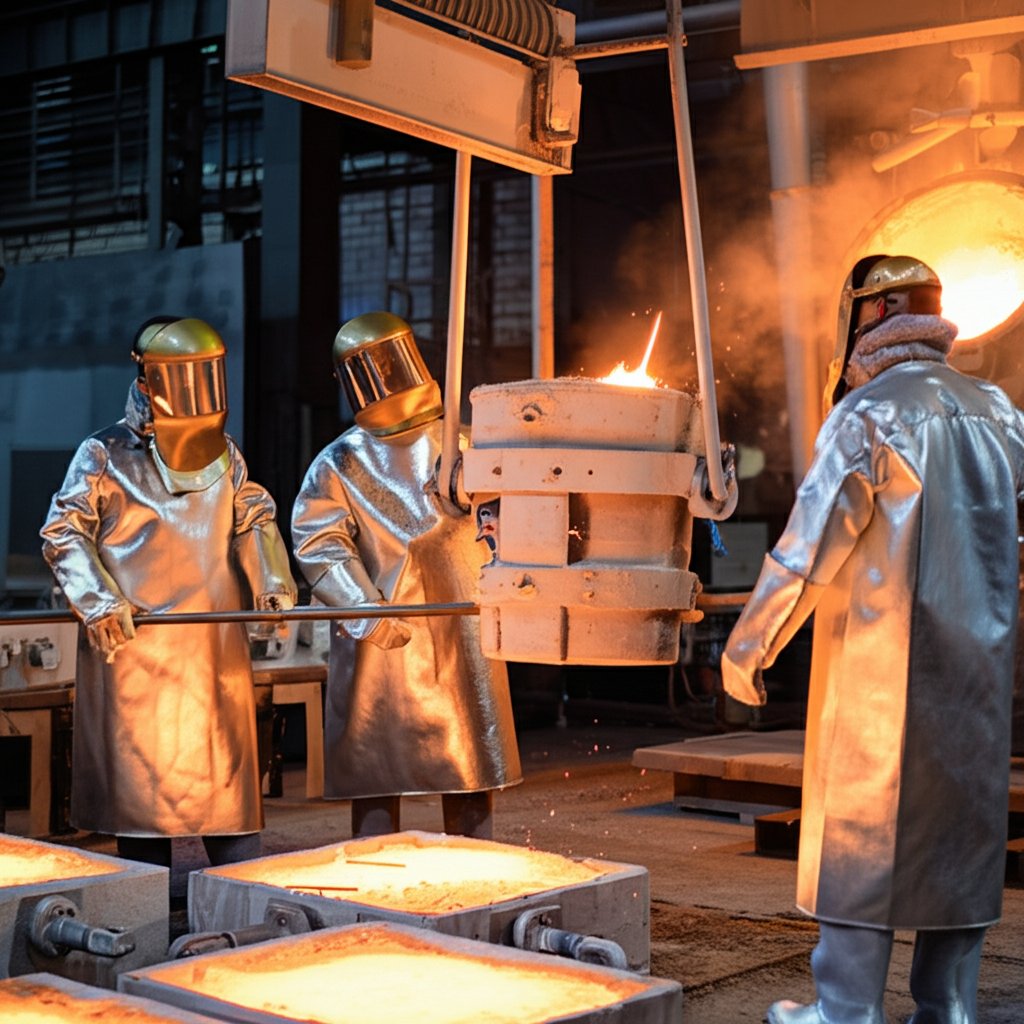
When it comes to casting aluminum, ensuring safety is not just a priority—it's a necessity. Handling molten aluminum involves high temperatures and potential hazards, making it crucial to follow stringent aluminum safety protocols. By understanding these best practices, you can minimize risks and enhance the quality of your castings.
By adhering to these aluminum safety protocols and implementing careful smelting and pouring techniques, you can significantly reduce the risks associated with casting aluminum. These measures not only protect workers but also improve the quality and reliability of the cast products. For more detailed safety guidelines, consider consulting resources like the Harrison Castings Safety Guidelines and the Aluminum Association's Guidelines.
Aluminum is a staple in many households, found in items ranging from kitchen foil to beverage cans. Understanding the melting point of aluminum foil and other household items is crucial for safe and effective use. Aluminum foil, a ubiquitous kitchen companion, has a melting point of 660 degrees Celsius (1,220 degrees Fahrenheit), as noted by Sciencing. This high melting point ensures that aluminum foil remains stable under the typical temperatures encountered during cooking and baking.
However, while aluminum foil is safe for use in ovens, it's important to avoid direct contact with open flames or broilers, where temperatures can exceed its melting point. When using aluminum foil for grilling or broiling, always ensure it isn’t exposed to extreme heat directly to prevent melting or structural failure.
Aluminum cans, another common household item, are primarily used for packaging beverages. These cans are designed to withstand the pressures of carbonation and are not meant to be exposed to high heat. The aluminum used in cans has similar thermal properties to foil, but the structural integrity of cans can be compromised if exposed to excessive heat, such as during a fire or when left in a hot car for prolonged periods.
In everyday use, aluminum cans should be stored at room temperature and away from direct sunlight to maintain their integrity. It's also important to note that while aluminum's excellent thermal conductivity makes it ideal for heat dissipation, it also means that cans can quickly become too hot to handle if left in the sun or near a heat source.
By understanding the temperature thresholds of aluminum household items, you can use these products safely and effectively in various applications. This knowledge not only helps prevent accidents but also extends the life and functionality of these everyday items.
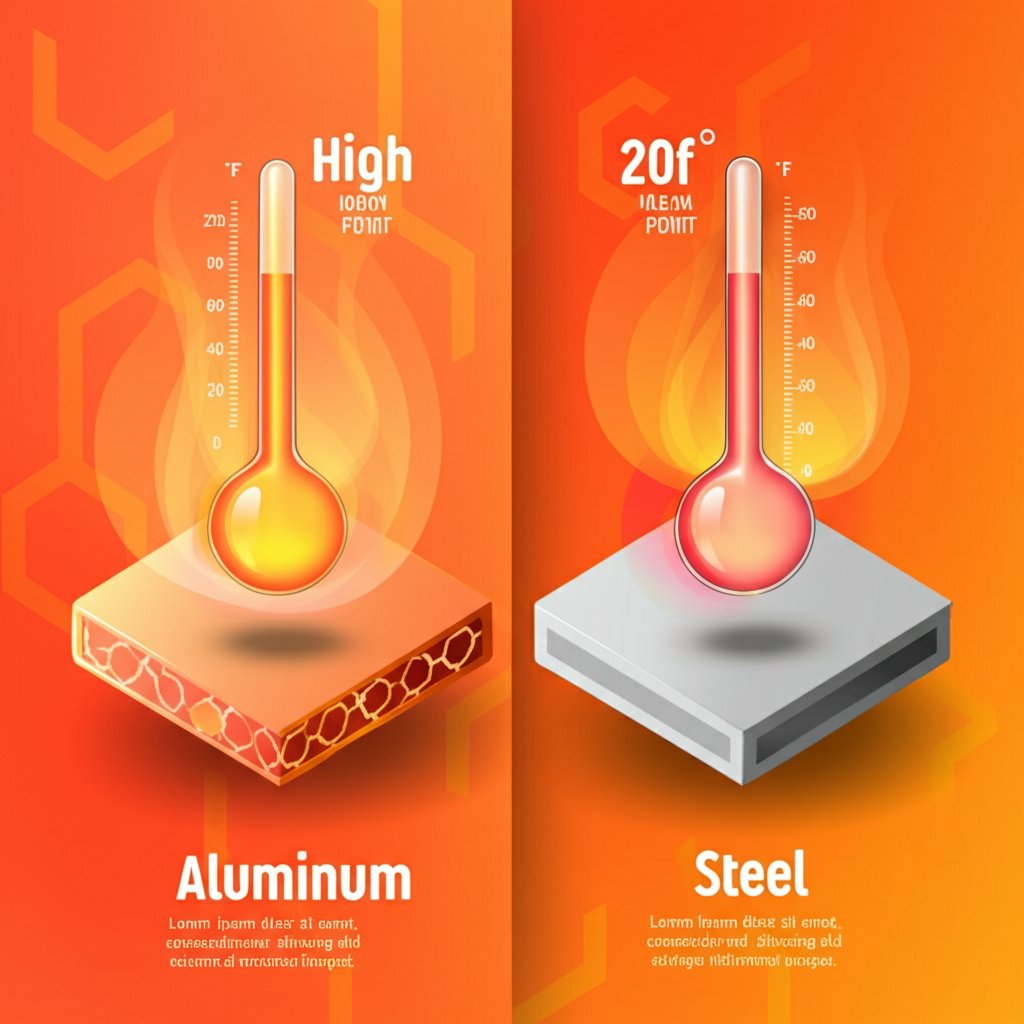
When it comes to choosing materials for applications that involve extreme heat, understanding the melting point of aluminum vs steel is crucial. Aluminum and steel, two of the most commonly used metals, have distinct thermal properties that make them suitable for different applications. Let's delve into these differences and explore how they affect performance under high-temperature conditions.
Aluminum melts at approximately 660°C (1220°F), whereas steel's melting point ranges from 1370°C to 1538°C (2500°F to 2800°F). This significant difference means that steel can withstand much higher temperatures before melting, making it a preferred choice for applications exposed to extreme heat, such as in furnaces and engines.
However, aluminum's lower melting point is not necessarily a disadvantage. Its high thermal conductivity allows it to dissipate heat rapidly, which is beneficial in applications like heat exchangers and electronic enclosures where efficient heat transfer is essential. This property enables aluminum to maintain performance in environments where effective heat dissipation outweighs the need for a high melting threshold.
The choice between aluminum and steel often involves weighing the trade-offs between heat performance and other factors such as weight, strength, and cost. Aluminum is roughly one-third the weight of steel, which makes it ideal for applications where reducing weight is critical, such as in aerospace and automotive industries. Its lightweight nature, combined with its ability to handle rapid temperature changes without significant thermal expansion, makes aluminum a strong contender in scenarios where weight and heat dissipation are key considerations.
On the other hand, steel's high melting point and strength make it suitable for structural applications requiring durability and resistance to deformation at high temperatures. This is why steel is commonly used in construction and industrial machinery.
In summary, when comparing the aluminum vs steel heat performance, the decision largely depends on the specific requirements of the application. Aluminum's excellent thermal conductivity and lightweight properties make it suitable for applications where heat dissipation and weight are more critical, while steel's high melting point and strength are advantageous in high-temperature structural applications. Understanding these differences allows engineers and designers to select the right material for their needs, ensuring optimal performance and efficiency.
As industries continue to push the boundaries of technology and sustainability, ongoing research in aluminum metallurgy advancements is paving the way for new applications and improved performance under high-temperature conditions. These innovations are not only enhancing the properties of aluminum but are also opening doors to more sustainable industrial practices.
Recent developments in aluminum metallurgy have focused on improving the material's ability to withstand high temperatures. This includes the creation of new aluminum alloys that maintain structural integrity at elevated temperatures, making them ideal for use in demanding environments such as aerospace and automotive industries. Techniques like additive manufacturing and friction stir welding are being utilized to enhance aluminum's mechanical properties and thermal stability. According to a study published in the Materials Journal, these processes allow for precise control over microstructures, resulting in alloys that can endure higher operational temperatures without compromising performance.
The future of aluminum applications is closely tied to sustainability. As industries seek to reduce their carbon footprint, aluminum's recyclability and lightweight properties make it a key component in sustainable manufacturing. The use of recycled aluminum significantly lowers energy consumption and greenhouse gas emissions compared to primary aluminum production. Companies are increasingly adopting closed-loop recycling processes, which not only conserve resources but also reduce waste, aligning with global sustainability goals.
Furthermore, the integration of renewable energy sources into aluminum production is gaining traction. For example, the use of hydropower in smelting processes is being explored as a means to cut down on carbon emissions. The International Aluminum Institute highlights how these practices are integral to moving towards a more sustainable future, with aluminum playing a crucial role in the development of eco-friendly technologies.
Looking ahead, the advancements in aluminum metallurgy are expected to drive innovation across various sectors. In aerospace, the development of high-performance aluminum alloys will lead to lighter and more fuel-efficient aircraft. In the automotive industry, the shift towards electric vehicles will see aluminum being used more extensively to reduce vehicle weight and improve energy efficiency. Moreover, the construction industry will benefit from aluminum's durability and resistance to corrosion, facilitating the creation of sustainable and long-lasting structures.
In conclusion, the ongoing research and advancements in aluminum metallurgy are setting the stage for a future where aluminum not only enhances performance but also contributes significantly to sustainability. By embracing these innovations, industries can achieve greater efficiency while minimizing environmental impact, ensuring that aluminum remains a vital material in the quest for a sustainable future.
Understanding the importance of aluminum melting point is crucial for innovators and engineers across various industries. This fundamental property not only dictates how aluminum behaves under high temperatures but also influences its application in critical fields such as aerospace, automotive, and construction. By grasping the nuances of aluminum's thermal behavior, professionals can optimize material selection and processing techniques, leading to enhanced performance and efficiency.
Throughout this article, we've explored the multifaceted role of aluminum's melting point. From its impact on alloy composition to its significance in household items, the melting point serves as a guide for material innovation and application. For instance, in aerospace, understanding aluminum's thermal limits ensures the creation of components that withstand the rigors of flight. Similarly, in automotive design, leveraging aluminum's properties can lead to lighter, more fuel-efficient vehicles.
For those seeking to harness the full potential of aluminum, partnering with a reputable manufacturer like Shengxin Aluminum offers access to custom alloy solutions tailored to specific needs. Shengxin Aluminum's expertise in producing high-quality aluminum profiles and extrusion services positions them as a valuable ally in achieving project goals. Whether you require specialized alloys for high-temperature applications or innovative solutions for sustainable manufacturing, their capabilities can support your endeavors.
In conclusion, the melting point of aluminum is more than a scientific fact; it is a cornerstone of material science that drives innovation and efficiency across industries. By understanding and utilizing this property, you can unlock new possibilities and contribute to advancements that shape the future of technology and design. Consider exploring partnerships with leaders like Shengxin Aluminum to fully leverage aluminum's capabilities in your projects.
Aluminum can be challenging to melt as it doesn't change color at high temperatures. It collapses suddenly when reaching its melting point, and molten aluminum oxidizes rapidly, forming aluminum oxide with a higher melting point.
Pure aluminum melts at 660.32°C (1220.58°F). However, alloying elements can alter this range, making it crucial for applications in aerospace and automotive industries.
Alloying elements like copper, magnesium, and zinc modify aluminum's melting range, enhancing properties like strength and corrosion resistance for specific industrial applications.
Key protocols include wearing protective gear, ensuring proper ventilation, controlling moisture, and maintaining equipment to safely handle molten aluminum and prevent accidents.
Aluminum melts at a lower temperature than steel, but its high thermal conductivity allows for rapid heat dissipation, making it ideal for heat exchangers and lightweight applications.
 Інтернет-сервіс
Інтернет-сервіс 0086 136 3563 2360
0086 136 3563 2360 sales@sxalu.com
sales@sxalu.com +86 136 3563 2360
+86 136 3563 2360